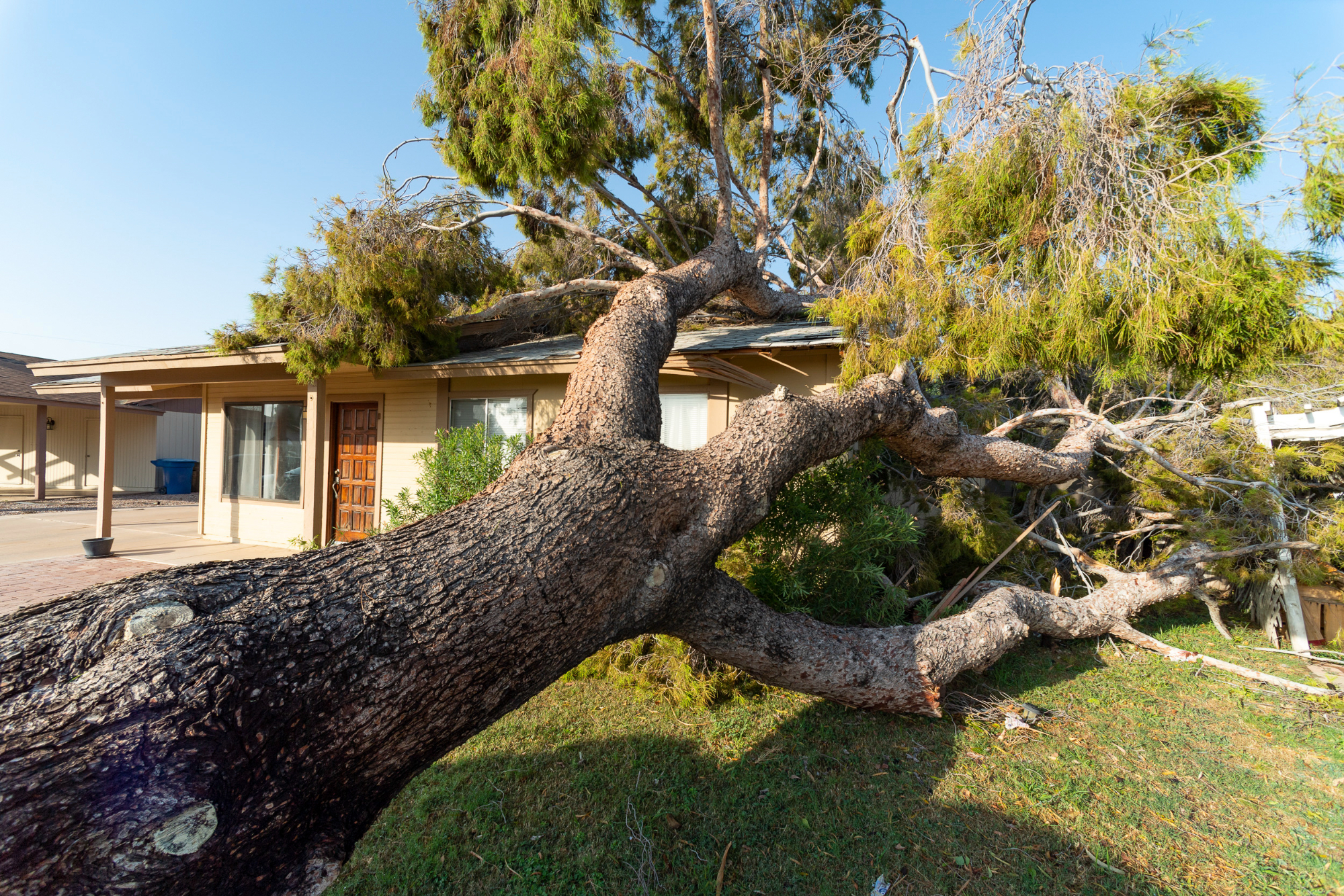
MarkSkalny/Getty Images

Audio By Carbonatix
On Monday afternoon, a microbust, or supercell thunderstorm, hit south Tempe. Over the next hour, it quickly traveled north throughout the Phoenix metro area and strengthened, bringing intense rain, winds and damage.
Trees were uprooted, and homes, businesses and warehouses were damaged. Even the Phoenix Zoo was torn apart and is closed for repairs. More than 130 people were forced to sleep elsewhere overnight because their homes were damaged in the storm. At one point, 34,000 power outages were reported in the area.
Over the last week, the Phoenix area has been inundated with rain. The area’s moisture has been moving in from Tropical Storm Raymond and Hurricane Priscilla, which formed in western Mexico. Monday was Phoenix’s fifth straight day with at least 0.10 inches of rain, tying the city’s longest streak, which happened more than 100 years ago in 1916.
When news happens, Phoenix New Times is there —
Your support strengthens our coverage.
We’re aiming to raise $30,000 by December 31, so we can continue covering what matters most to you. If New Times matters to you, please take action and contribute today, so when news happens, our reporters can be there.
Tempe’s microburst caught many residents by surprise and wreaked havoc. But how rare is such an event in the Valley? Phoenix New Times has the answers.
What is a microburst?
Microbursts as a “localized column of sinking air” that occurs within a thunderstorm and is “usually less than or equal to 2.5 miles in diameter, according to the National Weather Service. Tempe’s “fairly widespread” storm yesterday covered around a two-mile area, said NWS meteorologist Ted Whittock.
Microbursts can also be described as a “concentrated area of strong winds from a thunderstorm” that hits a small area, Whittock said. They generally occur in the Midwest and can last three to four hours.
Supercell thunderstorms can create several different types of hazards, Whittock said. This includes dangerous and severe straight line wind gusts, hail, heavy rainfall and flash flooding — all of which were seen in Tempe’s storm Monday. They can also produce tornadoes, but there was no evidence that a tornado occurred in Tempe yesterday, Whittock said.
How rare was the Tempe microburst?
Thunderstorms with strong downburst winds, like Tempe saw yesterday, are “pretty common” during Phoenix’s monsoon season, Whittock said. Monsoon season runs from June 15 to September 30.
However, technically, Phoenix’s monsoon season wrapped up at the end of last month. This time of year — “the fall after monsoon season,” Whittock said, is when these supercell-type thunderstorms are “much more frequent.”
Supercell thunderstorms differentiate themselves from an average monsoon storm through the factor of “wind shear,” which is what happens when the wind speed increases with height in the atmosphere, Whittock said. This factor, as well as the remnants of Tropical Storm Raymond, made Monday’s storm a “bit unique.” Wind shear rarely occurs during the monsoon season.
“The combination of those two things allowed for us to get thunderstorms,” Whittock said. “And some of them were supercell thunderstorms.”
While supercell thunderstorms are seen “basically every year,” they tend to occur in less populated areas and are much less common in the Valley. The fact that this storm formed south of the metro area, before moving into the area and continuing to strengthen, was “quite the unique scenario,” Whittock said. “It happens once every few years.”
The severity of the wind gusts during this storm was also “notable,” Whittock said. Wind gusts in Tempe were recorded between 60 to 71 miles per hour, which is very high for these types of storms in the Valley.
“We don’t see that very often,” he said.